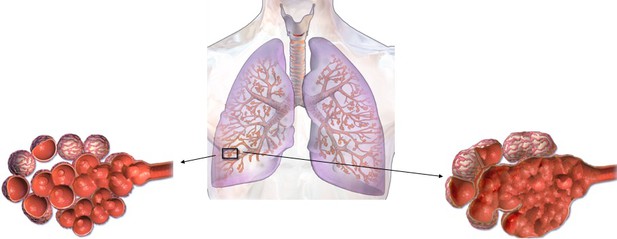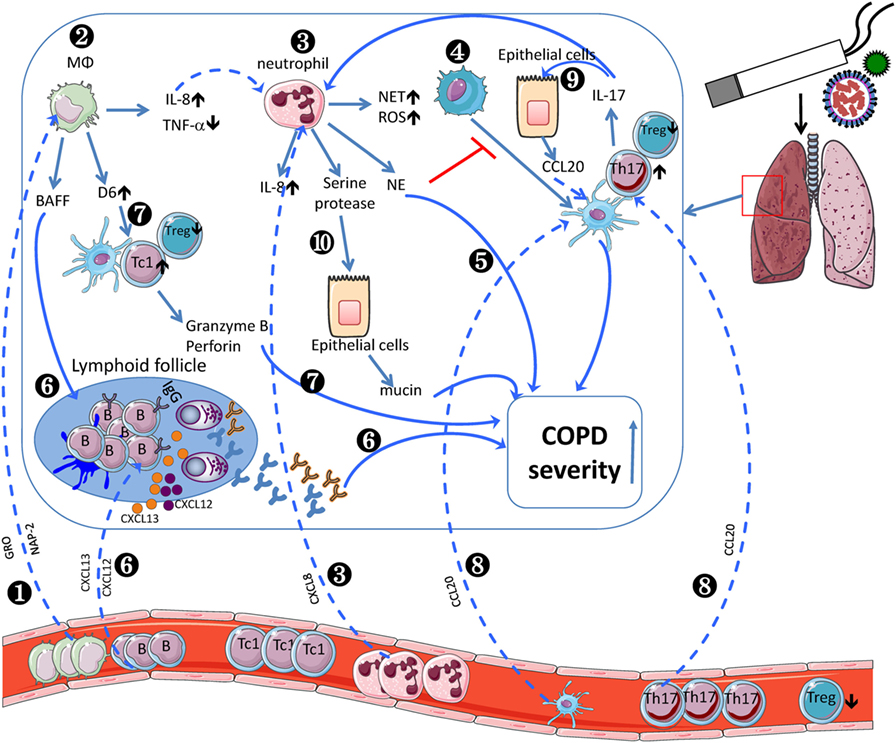Chronic lung damage, particularly a condition known as emphysema, is a progressive and debilitating respiratory disease that affects millions of people worldwide. Emphysema is one of the primary forms of chronic obstructive pulmonary disease, often abbreviated as COPD. This condition primarily impacts the air sacs in the lungs, leading to difficulty in breathing and reduced quality of life. Understanding the causes, symptoms, and care options for this condition is crucial for patients, caregivers, and healthcare providers alike.

What is Chronic Lung Damage?
Chronic lung damage refers to long-term harm to the structure and function of the lungs. Among the various forms of chronic lung damage, emphysema stands out due to its specific impact on the alveoli, which are tiny air sacs responsible for oxygen exchange in the lungs. Over time, these air sacs lose their elasticity and become damaged, making it harder for individuals to breathe properly.
This type of lung damage is irreversible, meaning that once the air sacs are destroyed, they cannot regenerate. As a result, the body struggles to get enough oxygen, leading to a cascade of health issues. Emphysema often develops gradually, with symptoms worsening over time if left untreated or unmanaged.
The Role of the Respiratory System
- Air Intake: The respiratory system is responsible for taking in oxygen from the air and delivering it to the bloodstream.
- Oxygen Exchange: The alveoli play a critical role in exchanging oxygen for carbon dioxide, a waste product expelled during exhalation.
- Breathing Process: Healthy lungs expand and contract effortlessly, allowing for smooth airflow in and out of the body.
In cases of chronic lung damage like emphysema, this process becomes impaired, leading to shortness of breath and other complications.
Causes of Chronic Lung Damage
Understanding the root causes of chronic lung damage is essential for prevention and management. While there are several factors that can contribute to this condition, some are more prevalent than others.
Smoking
Smoking is by far the leading cause of chronic lung damage, including emphysema. The harmful chemicals found in cigarette smoke irritate and inflame the airways, causing damage to the delicate walls of the air sacs. Over time, this leads to the destruction of lung tissue and reduced lung function. Even secondhand smoke exposure can increase the risk of developing this condition.
Air Pollution
Exposure to polluted air, whether from industrial emissions, vehicle exhaust, or indoor pollutants like dust and fumes, can also contribute to lung damage. Prolonged exposure to poor air quality weakens the respiratory system and increases susceptibility to diseases like emphysema.
Occupational Hazards
Certain occupations expose workers to harmful substances that can damage the lungs. For example, miners, construction workers, and factory employees may inhale dust, chemicals, or fumes that irritate the respiratory system. Without proper protective measures, these occupational hazards can lead to chronic lung conditions.
Genetic Factors
In rare cases, genetic predisposition plays a role in the development of chronic lung damage. A deficiency in alpha-1 antitrypsin, a protein that protects lung tissue, can make individuals more vulnerable to conditions like emphysema, even if they do not smoke or encounter other risk factors.
Symptoms of Chronic Lung Damage
The symptoms of chronic lung damage often develop slowly and may be mistaken for signs of aging or less serious respiratory issues. However, recognizing these symptoms early can help prevent further progression of the disease.
Shortness of Breath
One of the hallmark symptoms of chronic lung damage is shortness of breath, especially during physical activity. As the air sacs deteriorate, the lungs struggle to take in sufficient oxygen, leaving individuals feeling breathless even after minor exertion.
Chronic Cough
A persistent cough, often referred to as a smoker’s cough, is another common symptom. This cough may produce mucus and worsen over time, signaling ongoing irritation and inflammation in the airways.
Frequent Respiratory Infections
Individuals with chronic lung damage are more prone to respiratory infections such as bronchitis and pneumonia. The weakened state of the lungs makes it harder for the body to fight off infections, leading to frequent bouts of illness.
Wheezing and Chest Tightness
Wheezing, a high-pitched whistling sound during breathing, and a sensation of tightness in the chest are additional symptoms. These occur due to narrowed airways and restricted airflow caused by damaged lung tissue.
Unintended Weight Loss
In advanced stages of chronic lung damage, some individuals may experience unintended weight loss. The increased effort required to breathe can burn extra calories, leading to a decline in body weight.
Diagnosis of Chronic Lung Damage
Diagnosing chronic lung damage involves a combination of medical history evaluation, physical examinations, and diagnostic tests. Early detection is key to managing the condition effectively and slowing its progression.
Medical History and Physical Examination
Healthcare providers begin by reviewing the patient’s medical history, including smoking habits, exposure to pollutants, and family history of respiratory diseases. During a physical examination, they listen to the lungs using a stethoscope to detect abnormal sounds such as wheezing or crackles.
Pulmonary Function Tests
Pulmonary function tests measure how well the lungs are working. One common test is spirometry, which assesses the amount of air a person can exhale forcefully and quickly. Reduced lung capacity and airflow obstruction are indicators of chronic lung damage.
Imaging Studies
Imaging studies such as chest X-rays and computed tomography scans provide detailed pictures of the lungs. These images help identify structural changes, such as enlarged air spaces or damaged tissue, characteristic of emphysema.
Blood Tests
Blood tests may be conducted to check for signs of infection or to rule out other conditions. In some cases, a test for alpha-1 antitrypsin deficiency may be recommended, particularly if there is a family history of the condition.
Treatment Options for Chronic Lung Damage
While chronic lung damage cannot be cured, various treatment options can help manage symptoms, slow disease progression, and improve quality of life.
Lifestyle Modifications
Quitting smoking is the single most effective step individuals can take to prevent further lung damage. Avoiding exposure to pollutants and adopting a healthy lifestyle, including regular exercise and a balanced diet, also supports respiratory health.
Medications
Several medications are available to alleviate symptoms and reduce inflammation. Bronchodilators, which relax the muscles around the airways, help improve airflow. Inhaled corticosteroids may be prescribed to reduce swelling and mucus production.
Oxygen Therapy
For individuals with severe chronic lung damage, supplemental oxygen therapy may be necessary. This treatment delivers additional oxygen to the body, easing breathing difficulties and improving overall oxygen levels.
Pulmonary Rehabilitation
Pulmonary rehabilitation programs combine exercise, education, and support to help patients manage their condition. These programs teach breathing techniques, provide nutritional guidance, and offer emotional support to enhance coping skills.
Surgical Interventions
In advanced cases, surgical options such as lung volume reduction surgery or lung transplantation may be considered. These procedures aim to remove damaged lung tissue or replace diseased lungs with healthy ones, respectively.
Caring for Individuals with Chronic Lung Damage
Providing care for someone with chronic lung damage requires a comprehensive approach that addresses both physical and emotional needs.
Creating a Supportive Environment
Ensuring a clean and smoke-free environment is essential for individuals with chronic lung damage. Removing potential irritants like dust, pet dander, and strong odors can help minimize respiratory distress.
Encouraging Regular Medical Check-Ups
Regular visits to healthcare providers allow for ongoing monitoring of lung function and adjustments to treatment plans as needed. Staying up-to-date with vaccinations, such as those for influenza and pneumonia, is also important to prevent complications.
Promoting Emotional Well-Being
Living with chronic lung damage can be emotionally challenging. Encouraging open communication, providing access to counseling services, and fostering connections with support groups can help individuals cope with the psychological impact of the condition.
Empowering Patients Through Education
Educating patients about their condition empowers them to take an active role in their care. Understanding the importance of medication adherence, recognizing warning signs of exacerbations, and learning effective breathing techniques are all valuable tools for managing chronic lung damage.





